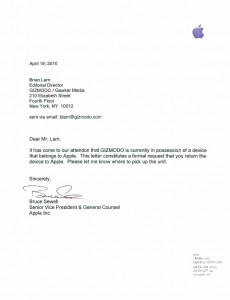Despite all the negative you hear about tracking cookies, they’re actually not that bad. In fact, the majority of websites out there use cookies in one way or another to save information about your visit to their site. When you log into a site like eBay for example, a cookie is placed on your computer that allows eBay to recognize you the next time you come back.
 In the case of your website, you can utilize tracking cookies to tell you a little more about your visitors such as what web browsers they use, what countries they come from and how they got to your site. This information will help dramatically with learning your site’s demographics.
In the case of your website, you can utilize tracking cookies to tell you a little more about your visitors such as what web browsers they use, what countries they come from and how they got to your site. This information will help dramatically with learning your site’s demographics.
Advertising cookies
Tracking cookies are most commonly used in advertisements to help keep everything organized and most importantly, relavent. Ad networks use these cookies as you travel from site to site where the same ad network(s) are used. This allows that company to follow your movement (tracking) and show you ads that are based on your previous activities.
From an advertising perspective, this makes perfect sense. If you were on eBay searching for car parts, eBay might show you ads related to cars and then if you go over to Amazon, the first ads you see are likely to be car parts. Amazon could also use previous cookies to show some car-related products on their homepage in hopes of selling something to you.
Tracking cookies
Essentially all cookies have some sort of tracking element to them and their sole purpose is to carry Internet usage data with them as you travel from site to site. Some people are fearful of tracking cookies simply because of their name. The words tracking and Internet don’t play well in a lot of people’s minds and they immediately have visions of companies hoarding personal information.
This is simply not the case. Sure, cookies do store information that is specific to you, but it’s nothing that could identify you. However, due to privacy concerns, you have the option of turning cookies off in your favorite browser. I don’t recommend it because I actually like going to a website that remembers who I am and is able to show me products and ads that are related to my preferences.
Spyware
These days, software called spyware can be installed on your system and you may not even know it. But, as mentioned above, not all spyware is bad. One example would be your printer software. Most printer manufacturers install spyware on your system as part of the driver installation and it’s used to “phone home” to make sure that your device is always up to date.
However, every positive has its negative and spyware is no exception. There are many malicious programs out there that can harvest much more than driver versions. Things such as keyloggers can be used to gain unauthorized access to machines, but this is a separate topic!
| << Back to Demographic Info | Forward to Spam Prevention >> |
 Your website is no exception. There’s no sense in promoting your products and services to people who have no interest in using them. Learning your demographics for your niche or market will help you find people in particular age groups, cultural societies and various interests groups that fit your ideal customer. Knowing this information will help you better serve your customers and allow you to market specific segments of your business. The hard (and expensive) part is finding out who your customers really are.
Your website is no exception. There’s no sense in promoting your products and services to people who have no interest in using them. Learning your demographics for your niche or market will help you find people in particular age groups, cultural societies and various interests groups that fit your ideal customer. Knowing this information will help you better serve your customers and allow you to market specific segments of your business. The hard (and expensive) part is finding out who your customers really are. you get the chance, but don’t force it in your visitors’ faces. You may have seen websites that throw out popup or popunder windows and you already know how annoying these are.
you get the chance, but don’t force it in your visitors’ faces. You may have seen websites that throw out popup or popunder windows and you already know how annoying these are. in a separate folder. The scoring rules vary from service to service, but one of the most common spam blocking services out there is SpamAssassin. Depending on where your users get their mail, your messages may or may not have issues getting to them.
in a separate folder. The scoring rules vary from service to service, but one of the most common spam blocking services out there is SpamAssassin. Depending on where your users get their mail, your messages may or may not have issues getting to them.

 want to know about every bounced email your system gets because this gives you an opportunity to rectify the situation. In most cases, there’s nothing much you can do. If someone changed their email address and didn’t provide you with the new one, all you can do is prune your list accordingly.
want to know about every bounced email your system gets because this gives you an opportunity to rectify the situation. In most cases, there’s nothing much you can do. If someone changed their email address and didn’t provide you with the new one, all you can do is prune your list accordingly.
